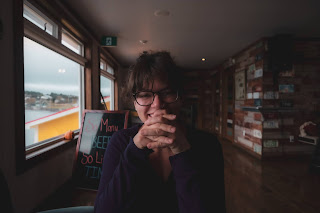Reopening Fund for Heritage Organizations
Has your museum applied for this year's emergency support funding yet? If not, now is the time to do it! This is similar to last year's emergency funding so it is not an onerous process and can be a great boost to your museum's operations. November 29th is the deadline to apply.
Museum Evaluation Program
It has been quite a month for the MEP. We had a number of queries about reports, and as I was working through them I got called away to be with my Mom. Her passing and some other issues have kept me from finishing ANSM's responses to these queries. I'm hopeful that things will settle soon so that I can wrap up this work.
Learning Opportunities
Last week Karin started teaching our Collections Management & Curatorship course online. Since we shifted this year's courses to Zoom, they are being delivered in two hour sessions over five weeks. It's a full class yet again, and we have had some questions about when this course will be offered again, so this seems like a good time to remind how the Museum Studies Program works. We offer 8 courses over 3 years. Museums 101 is offered two of the three years, but all of the other courses are only offered once every three years. When registration opens the courses fill up quickly, usually within a week. So if you are interested in taking part, be sure to plan ahead. Next year we'll be offering Facilities Management, Interpretation II: Exhibitions, and Marketing & Revenue Generation.
CollectiveAccess Updates
It has been a relatively busy month even as many sites make preparations to close for the winter season. With 1028 new records and 2255 media files being added since our last update in September that brings us to an overall total of 342,766 artifact records and 305,599 associated media files in our members' databases. Here's how things stand regionally:
Southwest: 147,000 artifacts, 104,574 images
Central: 106,378 artifacts, 98,522 images
Northeast: 56,371 artifacts, 76,940 images
Cape Breton: 33,017 artifacts, 25,563 images
Your image lesson of the month is this miniature teapot. There are a few things going on in this photograph that we can learn from to help create a high quality and professional image for the database. You want to make sure to only have your artifact in the frame of the photograph and for that artifact to fill as much of the photograph as possible. Even for larger and/or heavier objects that can't be easily moved for photographing a backdrop can be still be used to help eliminate any background noise or it can be done in any post photographic editing.
The contrasting background color that we choose for artifact photography is incredibly important! In this photograph we have two different background colors happening. Ideally you want a contrasting backdrop that is neutral in color (black, white, or gray). We also want a smooth background and one that is free from patterns, wrinkles, debris, etc.
Unless you are taking closeup shots of an artifact, scales are important to help demonstrate the size of an object. If your artifact has multiple components (like a teapot and lid for example) you will want to use a scale for each component when photographing the artifact. Remember to be consistent with the placement of the scale!
Educational Partnerships & NovaMuseEd
We also had an exciting month for NovaMuseEd efforts. Cheyenne and Krystal presented at the Social Studies Teachers Conference, sharing this new resource with about 50 teachers and getting their feedback. And Karin presented NovaMuse at the LAMNS conference. We seem to have been successful in spreading the word and garnering new interest. This month visitors accessed NovaMuseEd resources 1,139 times! That's almost double our previous monthly record.
Cheyenne has just finished drafting a new learning activity on candy making (yum!) so that will be online soon, and next up she'll be working through some museum resources to translate them to online use. If you haven't yet sent us your school program info or shared your thoughts and ideas for additional resources, feel free to reach out to Cheyenne at project[at]ansm.ns.ca.



